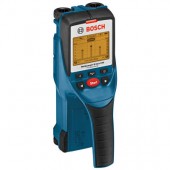For many people D-I-Y is more than just a hobby, it is a philosophy, a way of life.
Do-it-yourselfers are enthusiasts who like to rely on their own skills – skills they have learnt from a variety of different sources and people – to carry out home repairs or home or garden improvements in order to accomplish whichever goal they have set themselves, or simply to save money, or even both.
The satisfying sense which comes of having achieved something by using your wits and your own hands is something that has to be experienced to be believed. And in many cases, the work carried out is at least equal to any work carried out by professional builders or contractors, because of the dedication and eye for detail that goes into such a project. And needless to say, it is cheaper too. There are countless informational websites, magazines and programs on TV devoted solely to the art of do-it-yourselfing, a phenomenon which finances a whole industry while aiding a colourful cross-section of society to perform a myriad of tasks ranging from paving to plumbing, from welding to wiring.
Yet whereas do-it-yourselfers and handymen – and women – pride themselves on being sticklers for detail, there is one thing some tend to take a less seriously: safety. Safety in the home is no less important than safety in the workplace. Thousands of death and millions of medical visits a year could be avoided if people were more cautious and less trusting, especially when carrying out even simple tasks – like hammering a nail into a wall or drilling a hole.
Drilling into a wire or pipe can be dangerous – when you hit a wire or a pipe you risk getting an electric shock or causing damage that is not restricted to the affected area alone: wet walls or floors, widespread flooding or even cable fires are real and possible dangers.
So why risk damage, your health or even your life when the solution is so simple: the new D-tect 150 wall scanner.
Cutting-edge technology in a new design – the new D-tect 150 wall scanners are designed to meet the most modern and stringent technical and safety standards. The wall scanners are packed with a variety of useful functions and valuable features which enable you to detect plastic and other synthetic materials, wood, metal and electric wires quickly and reliably – down to a fraction of an inch.
The D-tect 150 wall scanner cannot only be used to scan the surface of the wall, ceiling or floor you wish to examine to determine whether there are any conduits, cables or wires concealed below: the wall scanners are designed to provide you with accurate and reliable information on the position and type of materials up to a depth of 15cm (6 ins) meaning that you can drill a hole or chisel out a path for your new pipes or wires in the knowledge that there will be no other water pipes, wooden beams or live wires to block your path.
The technicians and engineers who designed and developed the D-tect 150 paid particular attention to ergonomics and easy handling – there is no need to carry out any calibrations. Not only is the D-tect 150 equipped with a large, backlit display which you can switch on whenever the lighting conditions require that you do so, it is also IP54 protected and therefore dust and splashproof. This makes it ideal for use on building sites and in other rough environments. In fact it is so rugged it will even survive a fall from roughly 1metre.
The D-tect 150 wall scanner is quite an impressive device: it provides you with information on the type of material of the object under the layer of screed, concrete, masonry or plaster, and it tells you the exact position of the object or objects and how deep you can actually drill. In addition there are 4 sensors which scan the surface in one of 5 different operating modes: a universal mode for conventional walls and brickwork, a mode for concrete, one for floor or wall heatings and one for dry walls and hollow walls respectively.
Wall scanners – for professionals, do-it-yourselfers, and everyone and anyone who wants to be 100% sure


